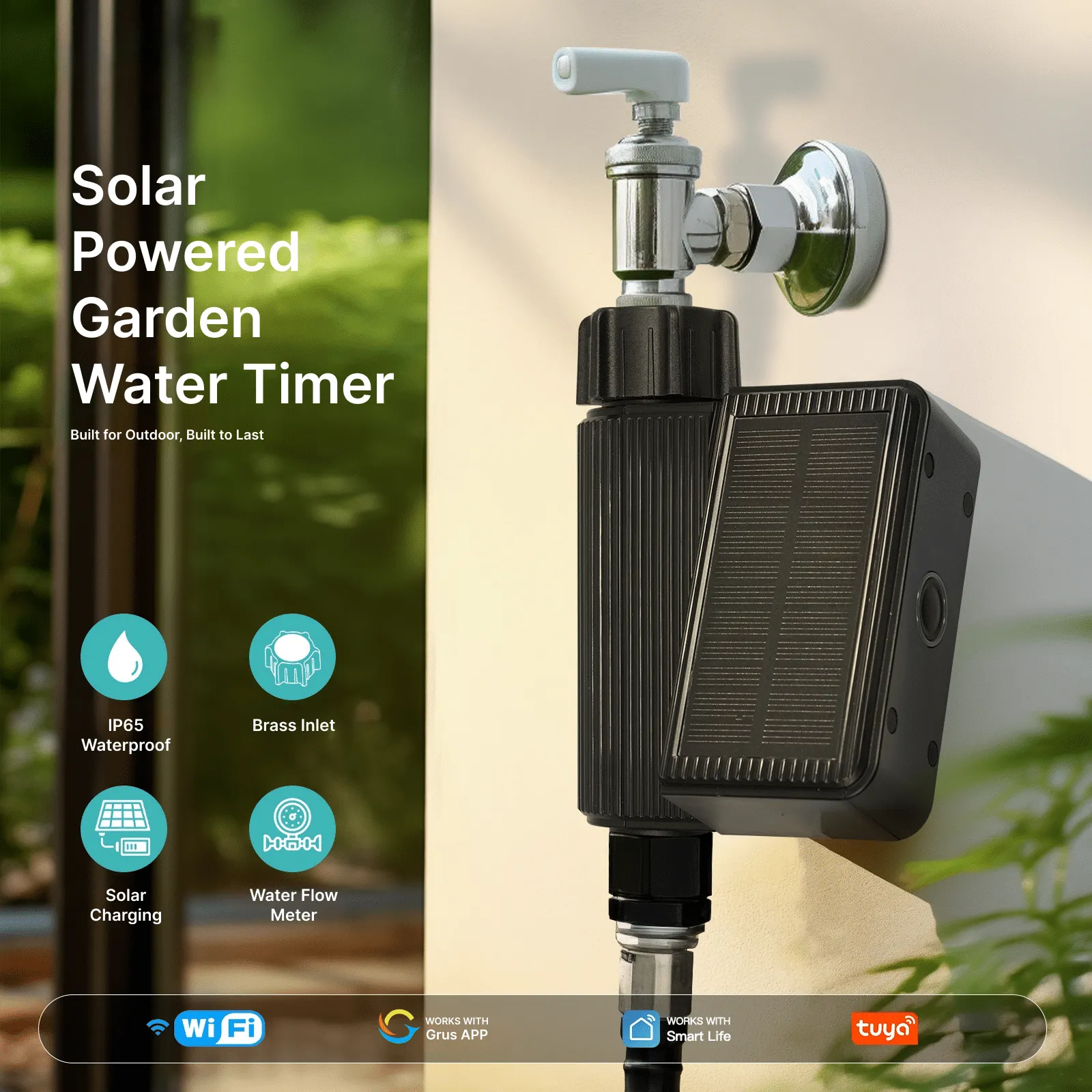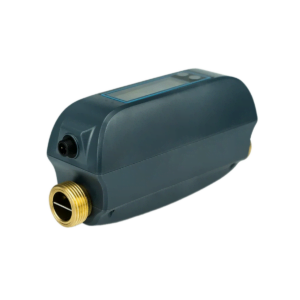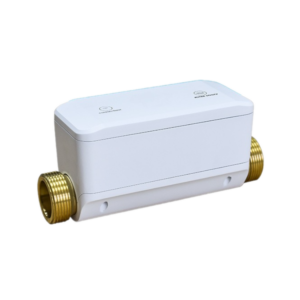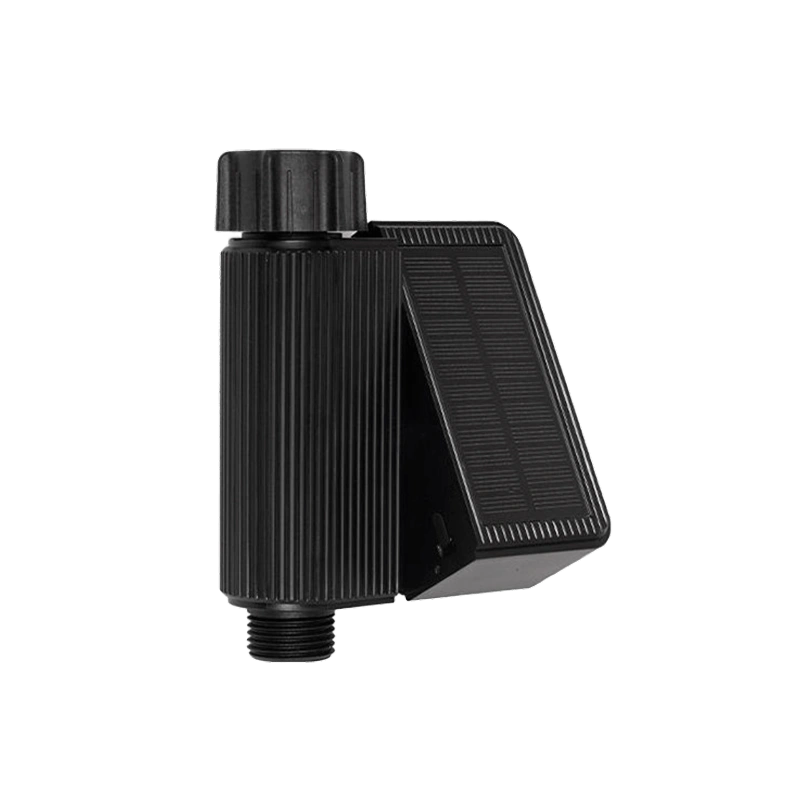Con l'accorciarsi delle giornate e il raffreddamento delle temperature, il prato si prepara per l'inverno. L'autunno è la stagione che decide se l'erba tornerà folta, verde e sana in primavera, oppure sottile, a chiazze e piena di erbacce. La buona notizia? Con un po' di cura autunnale del prato, puoi preparare il tuo giardino al successo.
Conosci il tipo di prato
Non tutta l'erba è uguale e la cura del prato autunnale dipende da cosa cresce nel tuo giardino.
- Erbe di stagione fredda(come il poa pratensis, il loietto e la festuca) crescono meglio negli stati settentrionali. Amano il clima fresco e la maggior parte della loro crescita avviene in autunno. Questo è il periodo ideale per concimarle, seminarle e ripararle.
- Erbe della stagione calda(come Bermuda, St. Augustine e Zoysia) sono comuni negli stati del sud. Rallentano con l'arrivo dell'autunno. L'obiettivo è proteggerle dal gelo e mantenerle sane durante la dormienza.
Suggerimento per i principianti: Se non sei sicuro del tipo di erba che hai, dai un'occhiata al tuo prato in autunno. Se diventa marrone mentre il giardino del tuo vicino rimane verde, probabilmente hai un'erba da stagione calda.
Lista di controllo per la cura rapida del prato autunnale
Ecco una semplice lista di cose da fare a cui puoi attenerti:
- Continuare a tagliare fino alla prima gelata (abbassando però un po' la lama).
- Rastrella o pacciama le foglie cadute, evitando che soffochino l'erba.
- Se il terreno risulta compatto, arieggiarlo.
- Per ottenere un prato più folto la prossima primavera, riseminate le zone spoglie.
- Fertilizzare i prati coltivati nella stagione fredda per sviluppare radici forti.
- Se l'autunno è secco, annaffiare abbondantemente.
- Scollegare i tubi da giardino e proteggere i rubinetti esterni dal gelo.
Anche se segui solo alcuni di questi passaggi, il tuo giardino ti ringrazierà in primavera.
Continua a tagliare l'erba finché non è il momento di smettere
Molti proprietari di casa pensano che la stagione del taglio dell'erba finisca dopo il Labor Day. Non è vero! Tagliare l'erba è ancora una delle parti più importanti dellacura del prato autunnale.
- Con quale frequenza tagliare l'erba: Continua a tagliare l'erba ogni 7-10 giorni finché non smette di crescere. Nella maggior parte delle regioni, questo significa fino alla prima forte gelata.
- Altezza di taglio migliore:
- Erba fresca: abbassare gradualmente la lama del tosaerba da circa 8-9 cm in estate a 5-6 cm nel tardo autunno. Questo aiuta a evitare che il prato si ricopra di neve.
- Erbe da stagione calda: mantenere all'altezza consigliata, solitamente intorno ai 3,8–5 cm.
- Consiglio per principianti fai da te: Non tagliare mai più di un terzo dell'erba alla volta. Tagliare troppo corto tutto in una volta stressa il prato e favorisce la crescita delle erbacce.
Un prato tagliato correttamente in autunno ha meno probabilità di sviluppare muffa, appare ordinato per tutto l'inverno e si riprende rapidamente in primavera.
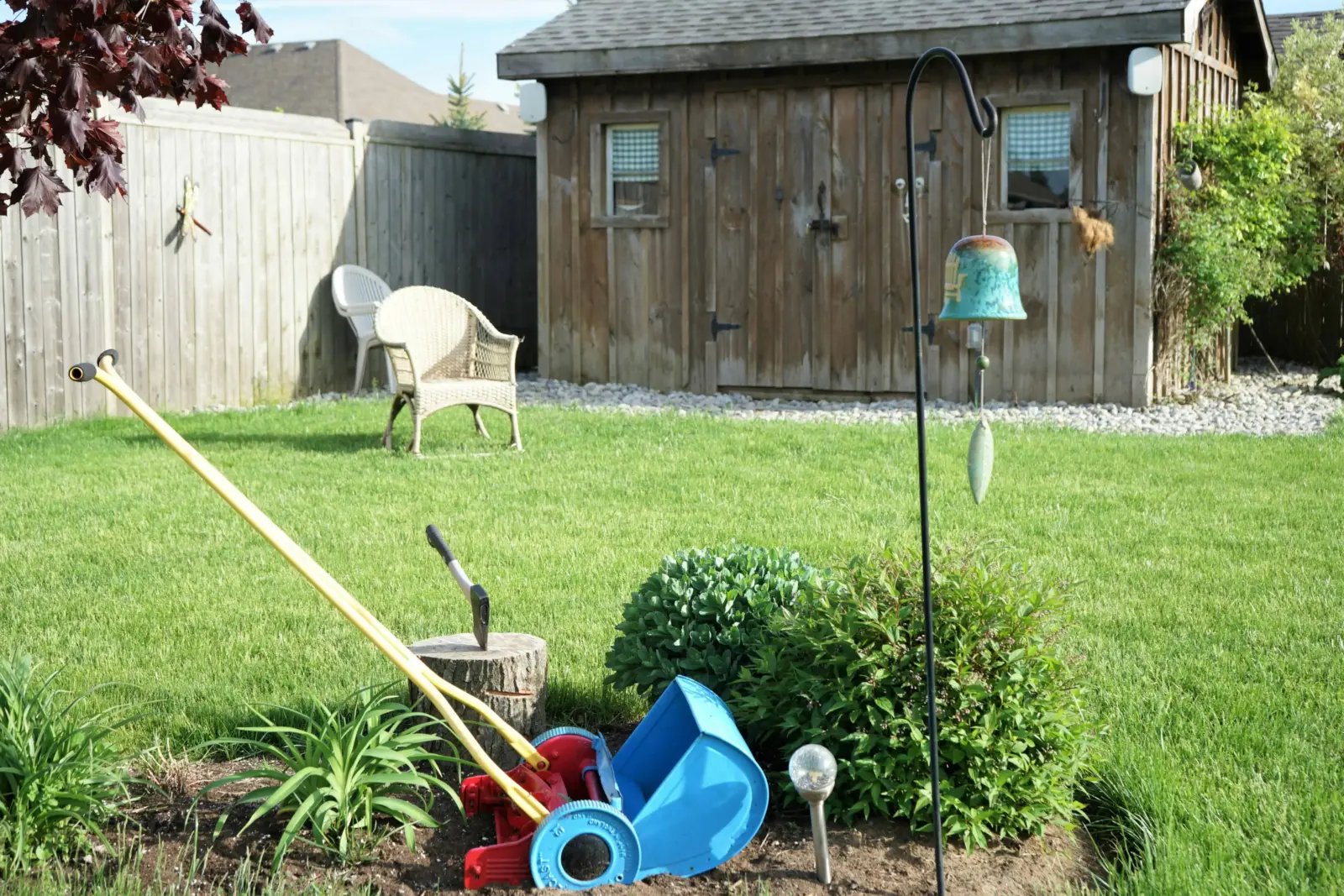
Rastrella e pacciama le foglie cadute
Le foglie cadute sono bellissime, ma possono soffocare l'erba se lasciate sul prato. Bloccano la luce solare, intrappolano l'umidità e creano l'ambiente ideale per le malattie.
Ecco le tue opzioni:
- Rastrellamento: Il metodo classico. Prendi un rastrello e rimuovi le foglie ogni settimana. È un buon allenamento e mantiene il giardino in ordine.
- Pacciamatura con tosaerba: Molti tosaerba moderni possono tagliare le foglie in piccoli pezzi. Le foglie pacciamate si decompongono durante l'inverno, reintegrando la materia organica nel terreno.Agenzia per la protezione ambientale degli Stati Uniticonsiglia di pacciamare o compostare le foglie invece di inviarle in discarica.
- insacchettamento: Se hai troppe foglie da pacciamare, raccoglile in sacchi da giardino. Controlla le normative locali: molte città offrono programmi di raccolta delle foglie o di compostaggio.
Trucco fai da te per principianti: Se rastrellare ti sembra troppo, non aspettare che il prato sia interrato. Passate leggere e frequenti con un rastrello o un tosaerba mulching rendono il lavoro più semplice.
🍂Promemoria per la lista di controllo del prato autunnale: Non lasciare mai uno spesso strato di foglie bagnate sul prato. Soffoca le radici e lascia zone spoglie in primavera.
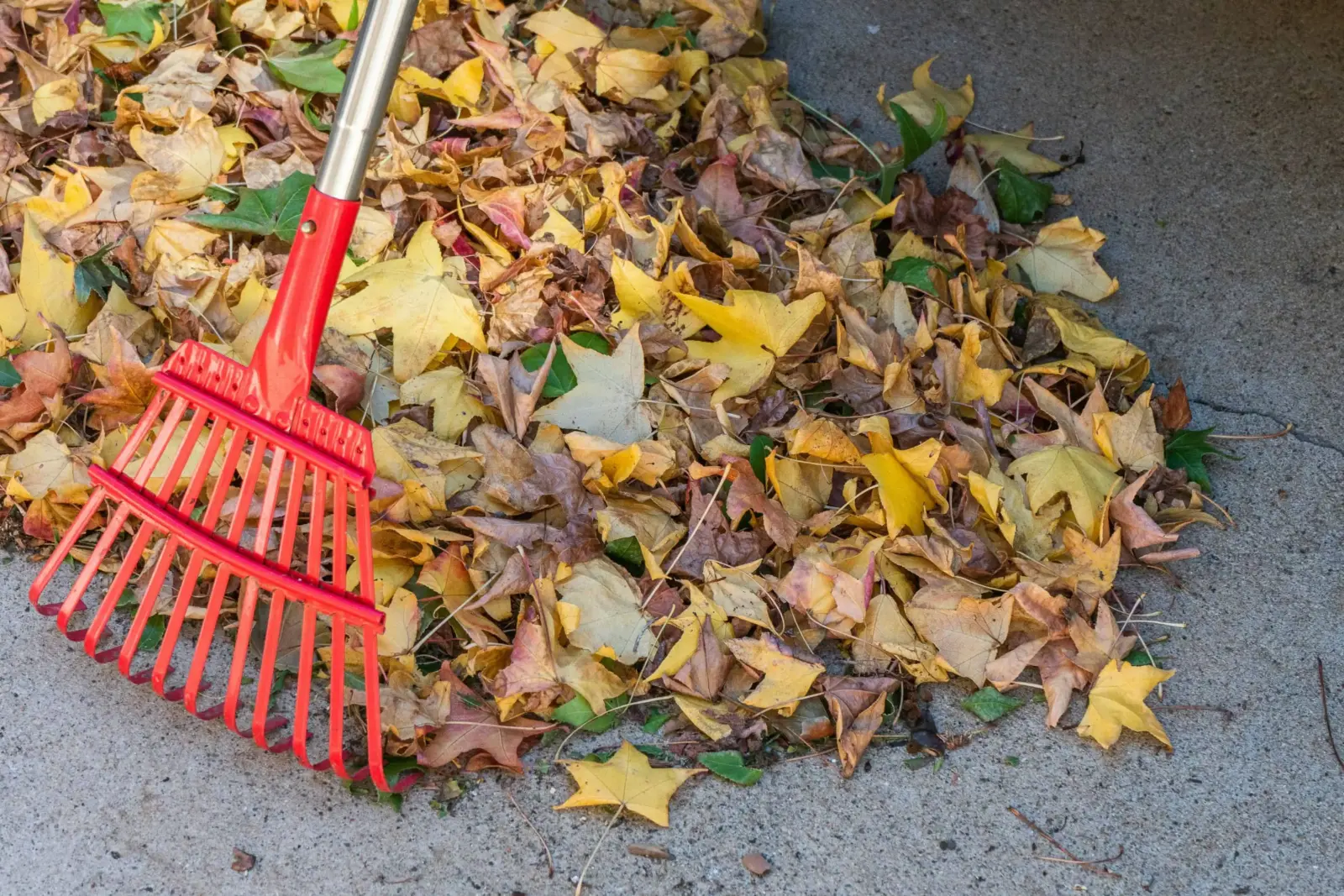
Arieggiare il terreno
Dopo un'estate di bambini che giocano, animali domestici che corrono e traffico pedonale per i barbecue, il terreno del prato può compattarsi. Il terreno compatto impedisce all'acqua, all'aria e ai nutrienti di raggiungere le radici. Ecco perché l'autunno è il periodo migliore per...arieggiare il prato.
- Che cosa è l'aerazione?
L'aerazione consiste nel praticare piccoli fori nel terreno per smuoverlo. In questo modo, le radici dell'erba hanno spazio per crescere più in profondità e più forti. - Come farlo:
- Aeratore centrale(opzione migliore): estrae piccole zolle di terra. Puoi noleggiarne una presso un centro di giardinaggio o un negozio di ferramenta.
- Aeratore a punta(più semplice ma meno efficace): crea buchi nel terreno. Adatto ai giardini più piccoli.
- Consiglio per principianti fai da te: Anche camminare con le scarpe chiodate è meglio di niente!
- Il momento migliore: Arieggiare una volta all'inizio o a metà autunno, quando l'erba è in piena crescita.
Un prato ben arieggiato assorbe meglio fertilizzante e acqua, predisponendo le radici a sopravvivere all'inverno e a prosperare in primavera.
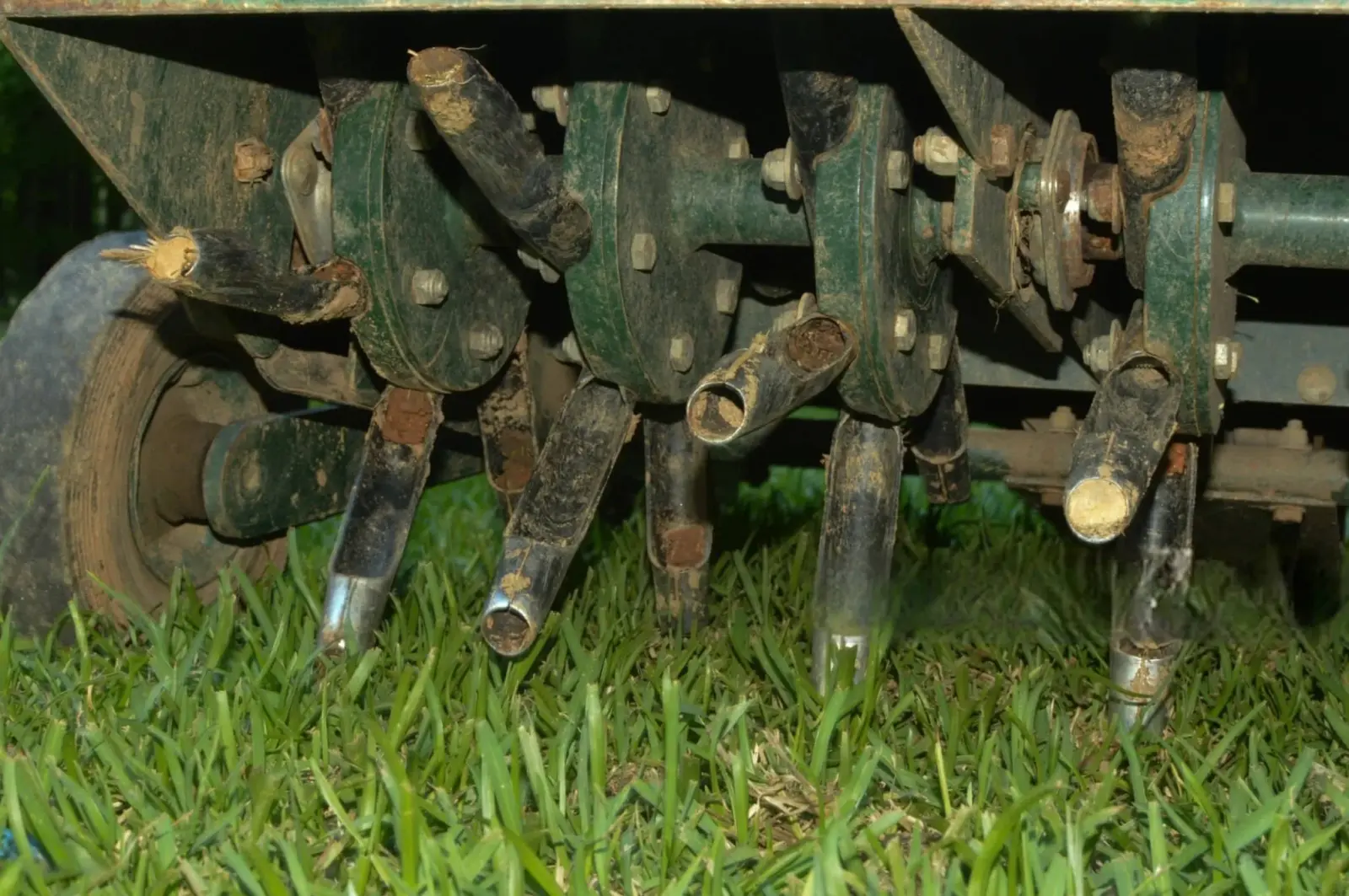
Risemina delle zone nude
Le zone spoglie del tuo prato non sono solo brutte da vedere, ma sono anche un invito aperto alle erbacce a prendere il sopravvento. L'autunno è la stagione perfetta perriseminaperché le temperature più fresche e le piogge autunnali favoriscono la crescita di nuova erba.
- Scegli il seme giusto: Scegli il tipo di erba che preferisci (stagione fredda vs. stagione calda). Per i principianti, le etichette dei semi indicheranno la zona giusta e le esigenze di luce solare.
- Preparare l'area:
- Rastrellare il terreno per allentarlo.
- Rimuovere detriti o erba morta.
- Distribuire i semi in modo uniforme a mano o con uno spargitore.
- Completa il tutto: Coprire leggermente con uno strato sottile di terra o compost per proteggere i semi dagli uccelli.
- Irrigazione: Mantenere il terreno umido (ma non fradicio) finché le piantine non si saranno stabilizzate. L'ideale è annaffiare leggermente una o due volte al giorno.
Trucchi per la cura del prato in autunno: Combina la risemina con l'aerazione. I fori di aerazione offrono ai semi un luogo perfetto in cui depositarsi e crescere.
🌱 Entro la primavera, quelle chiazze sottili si riempiranno, regalandoti un prato folto e rigoglioso, più facile da mantenere.
Concimare in autunno
Se concimi il prato solo una volta all'anno, fallo in autunno. La concimazione ora fornisce all'erba i nutrienti di cui ha bisogno percostruire radici forti prima dell'invernoInvece di alimentare la crescita delle foglie (come in primavera), i fertilizzanti autunnali si concentrano sulla forza delle radici e sulla resistenza alle malattie.
- Il momento migliore per concimare: Da fine settembre a novembre, circa 2-3 settimane prima che il terreno geli.
- Cosa usare:
- Cerca un fertilizzante etichettato come "autunnale" o "svernante".
- Scegliete un prodotto ricco di azoto (per lo sviluppo delle radici) e potassio (per la resistenza allo stress).
- Come candidarsi: Utilizzare uno spandiconcime a spaglio o a caduta per una copertura uniforme. Seguire attentamente le istruzioni riportate sulla confezione: troppo fertilizzante può bruciare il prato.
Consiglio per principianti fai da te: Dopo aver concimato il prato, annaffialo leggermente per favorire l'assorbimento dei nutrienti.
L'alimentazione autunnale è una delle più sempliciconsigli per la cura del pratoche darà i suoi frutti in primavera. Noterai un'erba più verde che uscirà dalla dormienza più forte e veloce.
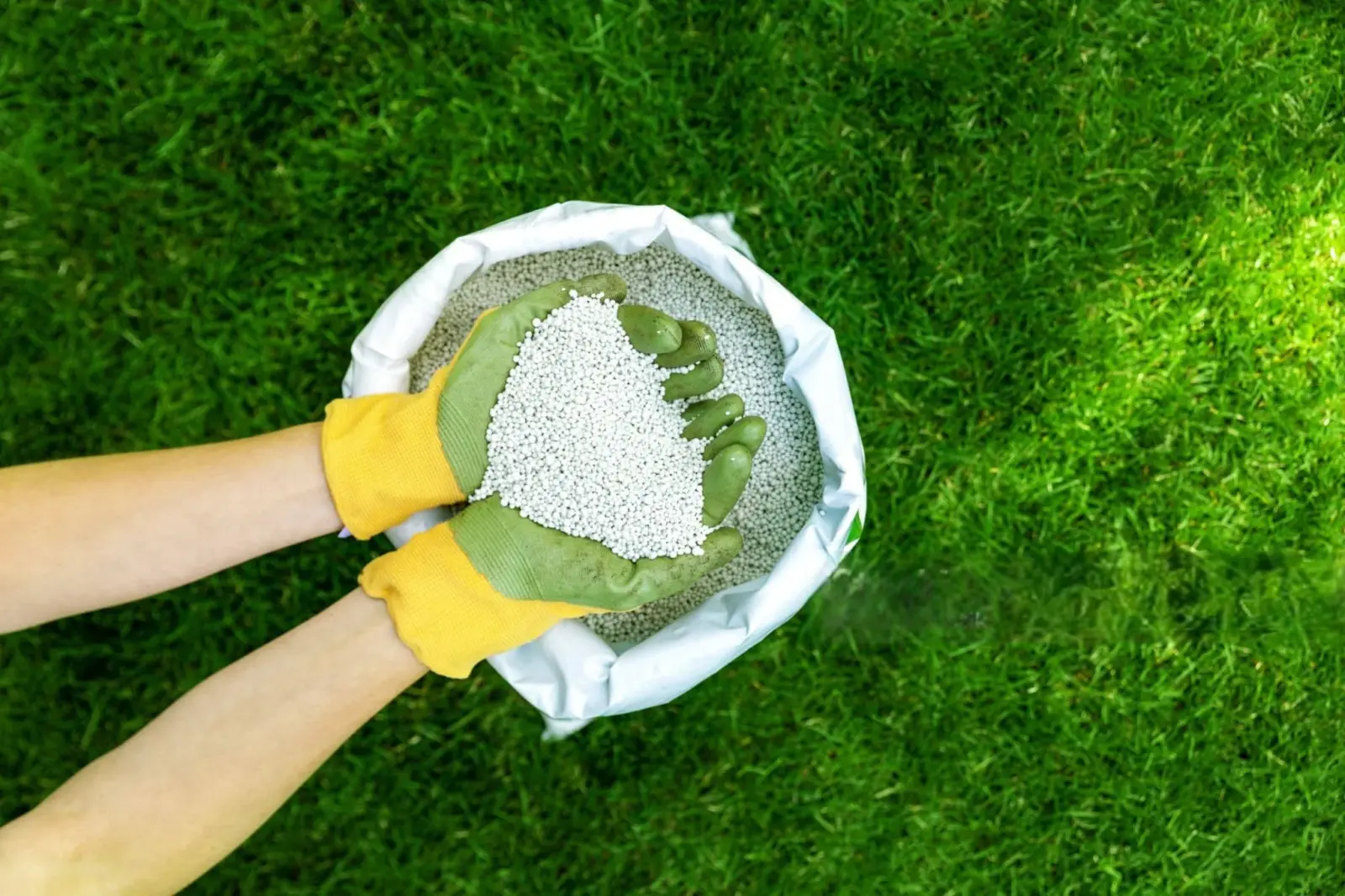
Acqua in profondità
Solo perché fuori fa più fresco non significa che il prato non abbia più bisogno di acqua. Anzi, molti giardini si seccano in autunno perché i proprietari di casa chiudono gli irrigatori troppo presto. Le radici dell'erba hanno ancora bisogno di umidità per prepararsi all'inverno.
- Quanto annaffiare: L'obiettivo è di irrigare con circa 2,5 cm di acqua a settimana, sia tramite pioggia che tramite irrigazione.
- Il momento migliore per annaffiare: L'ideale è farlo al mattino presto. In questo modo si riduce l'evaporazione e si evita che il prato rimanga umido durante la notte (il che può causare malattie).
- Trucco fai da te per principianti: Posiziona una lattina di tonno vuota sul prato quando innaffi. Una volta riempita con 2,5 cm d'acqua, hai finito.
Promemoria per la lista di controllo del prato autunnale: Continuare ad annaffiare finché il terreno non gela. Dopodiché, scollegare i tubi e chiudere i rubinetti esterni per proteggerli dal gelo e dallo scoppio.
💧 Un prato ben idratato che affronta l'inverno è più resistente ai danni del gelo e torna più folto in primavera.
Un semplice trucco: posiziona una lattina di tonno vuota sull'erba mentre annaffi: una volta piena, hai centrato il bersaglio. Per un migliore controllo, usa untimer intelligente per tubi flessibili alimentato a energia solareche si spegne automaticamente per evitare l'irrigazione eccessiva.
Preparare il prato e l'acqua esterna per l'inverno
La cura del prato autunnale non riguarda solo l'erba in sé. Anche l'impianto di irrigazione, i tubi flessibili e i rubinetti esterni hanno bisogno di protezione prima dell'arrivo delle temperature gelide. Un tubo congelato può rompersi, perdere e causare danni per centinaia di euro.
Ecco come farepreparare per l'inverno i sistemi idrici del tuo giardino:
- Chiudere i rubinetti esterni– Chiudere l'alimentazione idrica interna della casa che porta ai rubinetti esterni. Quindi aprire i rubinetti esterni per far defluire l'acqua residua.
- Scollegare i tubi– Se possibile, arrotolare i tubi e conservarli in casa. Lasciarli attaccati intrappola l'acqua nel rubinetto, che potrebbe congelare e scoppiare.
- Svuotare le linee degli irrigatori– Se hai un impianto di irrigazione interrato, chiudi la valvola principale. Apri tutte le valvole di scarico per far defluire l'acqua. Alcuni proprietari di casa usano aria compressa per "spurgare" l'impianto, ma è meglio lasciare che sia un professionista a occuparsene se non si ha esperienza.
- Isolare le parti esposte– Le coperture in schiuma per rubinetti e manicotti per tubi rappresentano un'assicurazione economica contro le ondate di freddo.
Consiglio intelligente per i proprietari di casa: Installa unvalvola dell'acqua intelligenteall'interno o passare a unvalvola di intercettazione intelligente con protezione antigeloQuesti dispositivi chiudono automaticamente l'acqua se rilevano perdite, congelamento o pressione insolita, garantendoti tranquillità per tutto l'inverno.
Errori comuni dei principianti (e soluzioni facili)
Anche con le migliori intenzioni, è facile per chi si dedica alla cura del prato fai da te commettere errori. Ecco i più comuni che vediamo e come evitarli:
- Tagliare l'erba troppo corta
- Tagliare l'erba troppo bassa in una sola passata stressa il prato.
- Soluzione: abbassare gradualmente l'altezza del tosaerba eseguendo più tagli.
- Concimazione eccessiva
- Pensando "più cibo = prato migliore".
- Soluzione: seguire attentamente le istruzioni riportate sulla confezione. Aggiungere altro fertilizzante può bruciare l'erba e inquinare le falde acquifere.
- Saltare la pulizia delle foglie
- Lasciando che spessi strati di foglie si "decompongano naturalmente".
- Soluzione: pacciamare gli strati leggeri, rastrellare o insaccare quelli pesanti.
- Irrigazione al momento sbagliato
- Annaffiare di notte favorisce le malattie.
- Soluzione: annaffiare al mattino presto, cercando di ottenere circa 2,5 cm di acqua a settimana.
- Non preparare i sistemi idrici per l'inverno
- Dimenticare di chiudere e svuotare i tubi o gli irrigatori prima della prima gelata.
- Soluzione: svuotarli in anticipo e prendere in considerazione l'installazione di una valvola di intercettazione intelligente come riserva.
Ricorda: la cura del prato non deve essere perfetta. Piccoli accorgimenti costanti ogni autunno ti regaleranno un prato più sano e verde la prossima primavera.
Cronologia mensile del prato autunnale
Ogni regione del Nord America ha orari leggermente diversi. Usa questa semplice guida per sapere cosa fare e quando.
| Regione | settembre | ottobre | novembre |
|---|---|---|---|
| Stati del Nord(MN, WI, MI, NY, Nuova Inghilterra) | Arieggiare, riseminare, concimare precocemente | Continuare a tagliare, rimuovere le foglie, secondo fertilizzante | Ultimo taglio prima del gelo, spegnere gli irrigatori |
| Stati centrali(IL, OH, PA, KS, VA) | Arieggiare, riseminare, fertilizzare leggermente | Continuare a tagliare l'erba, pulire le foglie, annaffiare | Fertilizzare prima che il terreno geli, preparare i rubinetti per l'inverno |
| Stati del sud(TX, FL, GA, AZ) | Preparare l'erba della stagione calda per la dormienza | Abbassare l'altezza di taglio, ridurre l'irrigazione | Rastrella le foglie, proteggi le condutture idriche esterne |
Stampa questo grafico o salvalo sul tuo telefono comelista di controllo per il prato autunnale.
Devo davvero tagliare l'erba a ottobre?
Sì. L'erba continua a crescere con il clima fresco autunnale, soprattutto nei prati della stagione fredda. Continua a tagliarla finché la crescita non rallenta o non arriva il gelo.
Posso concimare e riseminare contemporaneamente?
Sì, ma usa un fertilizzante specifico per la semina. Evita prodotti diserbanti e concimi: possono impedire la germinazione dei nuovi semi.
Con quale frequenza dovrei annaffiare dopo la risemina?
Annaffia leggermente una o due volte al giorno finché i semi non germinano. Dopodiché, passa ad annaffiature più profonde e meno frequenti.
È sicuro effettuare lo spurgo fai da te dell'irrigatore?
Non proprio. L'uso di aria compressa senza l'attrezzatura adeguata può danneggiare valvole o tubi. La maggior parte dei proprietari di casa preferisce svuotare le tubature manualmente o assumere un professionista.
Qual è il modo più semplice per evitare che i tubi si congelino?
Chiudere i rubinetti esterni, i tubi di scarico e aggiungere coperture in schiuma. Per una protezione completa della casa, prendere in considerazione unvalvola di intercettazione intelligenteche chiude automaticamente l'acqua se la temperatura scende o si verificano perdite.
Considerazioni finali e CTA
La cura del prato autunnale non deve essere complicata. Concentratevi su questi aspetti fondamentali:
- Continuare a falciare fino al gelo.
- Rastrellare o pacciamare le foglie.
- Arieggiare e riseminare le zone più sottili.
- Fertilizzare per rafforzare le radici.
- Annaffiare finché il terreno non gela.
- Proteggi le tue condotte idriche esterne.
Fate un po' di giardinaggio ogni fine settimana e, in primavera, sarete ricompensati con un prato folto e verde, più facile da curare.
💡Consiglio professionale per i proprietari di casa: Non dimenticare le tubature e l'impianto di irrigazione. Le condutture idriche ghiacciate sono uno dei disastri invernali più costosi.valvola di intercettazione dell'acqua intelligentepuò proteggere la tua casa chiudendo automaticamente l'acqua se rileva congelamento o perdite.
👉Scopri di più sulle soluzioni di chiusura intelligente dell'acquae scopri quanto è facile proteggere la tua casa quest'inverno.
